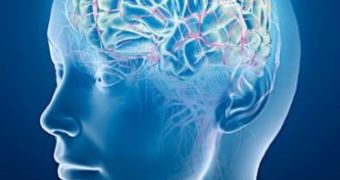A study carried out by Northwestern University links P300 brain waves to guilty knowledge in fake terrorist scenarios. Researchers say that if this test was used in real-life situations, it would provide 83 percent or more correct information about an attack, including date, location and weapons.
[ADMARK]The P300 brain waves are activated by culpability. Scientists from Northwestern labs, knowing in advance details of the planned attacks by the fake “terrorists”, were able to correlate P300 brain waves to guilty knowledge with 100 percent accuracy in the lab, according to J. Peter Rosenfeld, professor of psychology in Northwestern's Weinberg College of Arts and Sciences.
This is the first time that scientists use a fake scenario of subjects planning and not committing a crime. The P300 brain waves were analyzed by electrodes attached to the scalp of the make-believe “terrorists” in the lab. Even more interesting is the fact that even when the researchers had no advance details about the fake terrorism plans, the technology still accurately identified critical concealed information.
At the study took part 29 Northwestern students, that were supposed to plan a mock attack based on information they received about bombs and deadly weapons. They then had to write a letter explaining their plan's reasoning and encoding the information in their memory.
Afterward, they had electrodes attached to their scalps while they looked at a computer monitor that presented names of stimuli. The names of Houston, Boston, Chicago, New York and Phoenix, for example, were presented randomly and the city that was chosen for the big terrorist attack triggered the largest P300 brainwave responses.
The test had four classes of stimuli: targets, non-targets, probes and irrelevants. Targets are sights, sounds or other stimuli that the person being interrogated knows about, probes are likely to be known by guilty suspects only and irrelevants are stimuli unlikely to be recognized.
The students had only 30 minutes to learn about the attack and to detail their plans, which led Rosenfeld to say that their encoding of guilty knowledge was relatively superficial. “We suspect if our test was employed in the real world the deeper encoding of planned crime-related knowledge could further boost detection of terrorist intentions,” he added.
This discovering-if-people-lie-to-us idea that many people had over thousands of years and still do today, might also be a little unhealthy. As times changed, people started to acquire some rights, like freedom of speech and liberty of opinion and also the privilege of keeping things to themselves. This new technology capable of finding bad terrorist thoughts is good for the national security of every country, but it also stands on a very thin line between national security and privacy invasion.
It is widely known that national security tends to be more important that individual rights sometimes. Discovering terrorists is a positive thing but this device can easily be used for a wider purpose range, which might prove abusive and dangerous for people.
Ever since the 1980s, some scientists searched for an alternative to polygraph tests, and so began P300 testing. For this study, Rosenfeld and Northwestern graduate student John B. Meixner collaborated and published the results in a paper titled "A Mock Terrorism Application of the P300-based Concealed Information Test," in the journal Psychophysiology.

 14 DAY TRIAL //
14 DAY TRIAL //